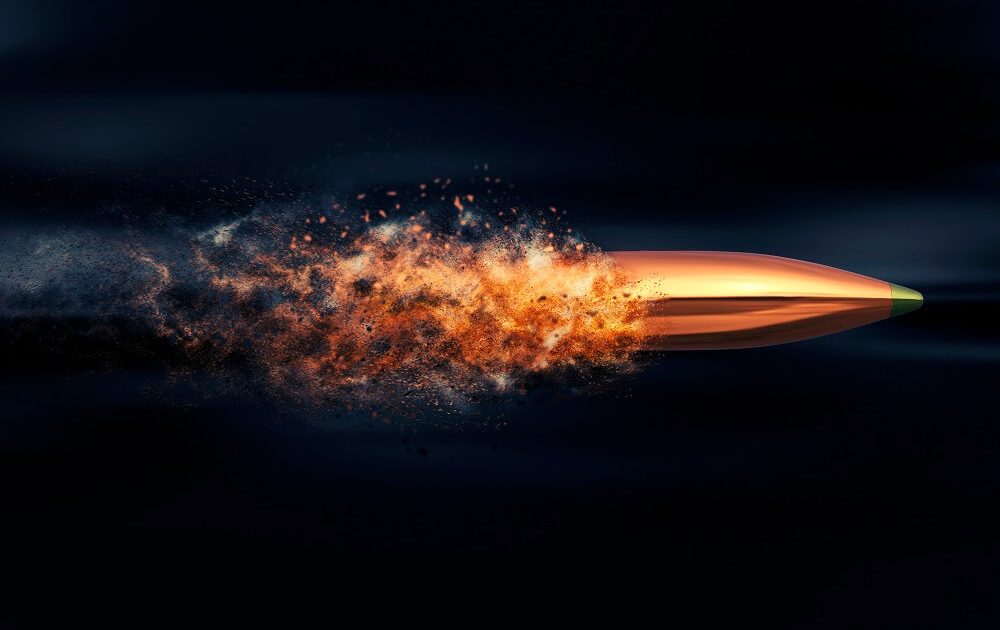Do Bullets Faster Than Sound? Amazing Facts to Know

It’s wild to think a turtle might take a whole day to cross a few kilometers, and a bullet can lance through in just a second, or maybe less.
We know what you’re thinking. Can you outrun a bullet coming your way? Is it humanely possible? Can you be Superman and defy all logic of time and space?
While all that might be exciting to fantasize about, we are here to speak to you about only facts about bullet traveling speed.
From your non-existent and virtual life experience with bullets, you might be aware of the fact that you cannot see one with your naked eyes. Shot from a distance, you do not know about it until you see blood.
Figures later but how actually is it possible?
So let’s talk about what a bullet comprises. Along the way, you would too think the makeup of fireworks and bullets has little to no difference. So let’s get on with fact number one.
Framework and Design
Usually, bullets contain three parts; bullet metal, propellant, and primer.
The primer is like a fuse. When you pull the gun’s trigger, the firing pin is pushed by a spring mechanism to the bullet’s back. Then there is a small explosion in the primer, which ignites the propellant. This explosive is chief which holds two-thirds of an average bullet’s volume.
The chemicals incarcerate at a steady pace. A lot of gas pressure is built to force the bullet metal below the barrel of the gun. Finally, the bullet pierces out from the gun in the open, where it hits the target.
All the explosions happen in the gun barrel. You hear a long bang just as the bullet leaves the gun called gunfire.
Sound vs. Bullet
Bullets fly with fantastic speeds. If we talk about the fastest bullet, it travels over 2,600 feet per second. In other words, it happens to be more than 1,800 miles per hour.
Do you know what that means? A bullet traveling speed is two times faster than the speed of sound!
Bullet Direction
Shooting a gun a few yards away will have its direction to be straight. Indeed, on short distances, the bullet travels in a straight line. Although we can’t say the same for long distances.
On the other hand, in long distances, when several forces pull the shell their way, the direction becomes more complex.
The reason it travels straight is because of the spinning motion the bullet comes through from the rifling which is inside the gun. The spirling grooves that the rifling has makes the bullet pierce out fast and straight.
Upon traveling a longer distance, gravity and air resistance forces alter their direction. First, gravity pulls the bullet down to carve its direction into a slight downward arc. Then, the air resistance opposes the movement it’s moving, and the recoil after firing a bullet sends a wobbly jump to it. As a result, the bullet’s track is more like a corkscrew!
Factors that Affect the Speed of a Bullet
Speed rises and falls depending upon many factors such as gravity and the projectile’s shape, size, and the effect of air density. So the projectile drops to the earth, and while it crosses a distance, air resistance lessens the distance and decreases the pace by which it travels.
You can measure the bullet traveling speed by fps or feet per second.
The 0.22 Rimfire Cartridge
So let’s talk about the 0.22 rimfire cartridge. It has a little power charge and propels bullets at a pace of 370 m/s to 460 m/s. The centerfire cartridges or the cartridges in rifles send their bullet at a much quicker pace.
The 0.220 Swift
The cartridge with the highest speed is the 0.220 Swift that impels a bullet at a pace higher than 1220 m/s. The bullet is usually very small too.
The Shotgun Pellets
The shotgun pellets have the slowest velocity of 335 m/s and the fastest travel of 427 m/s, so they have a minute difference in the range of their speeds.
Shocking Facts about Bullets we bet you didn’t know
Shots fall back on the ground at terminal velocity, which can cause terrible fatalities. If you think vertical firing was bad enough; you might not know how much damage the other angles can bring. Hard to believe? Let us explain.
As the bullet falls from the sky, it keeps up its angular ballistic trajectory, so the injury is out of the blue and intense. No wonder over twenty people died in Iraq from said festive gunfire after Saddam Hussein’s sons died in 2003.
Let’s walk you down the tail of Red Baron, a German fighter pilot who was murdered due to a single bullet that struck him in the stratosphere. However, the hero landed his plane first with no injuries to the plane a few minutes before he died.
Conclusion
In brief, as you might know now, the bullet traveling speed is faster than even sound, so it’s best if you stay clear and away from them. And to think Superman travels faster than a bullet? That, however, is a topic for another day.
